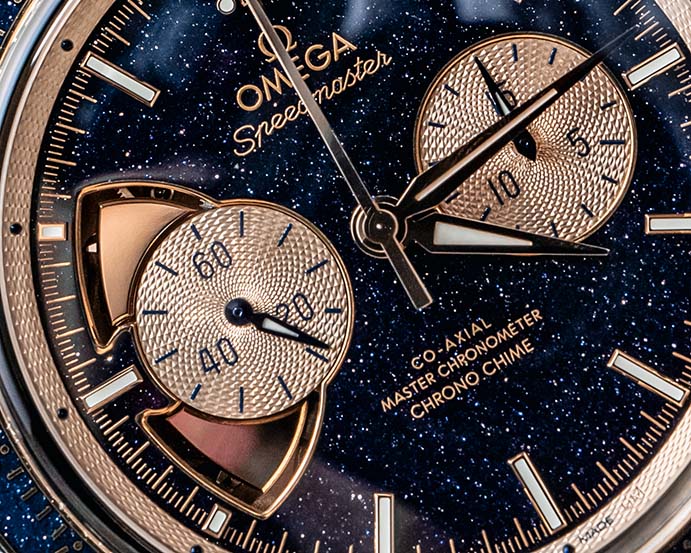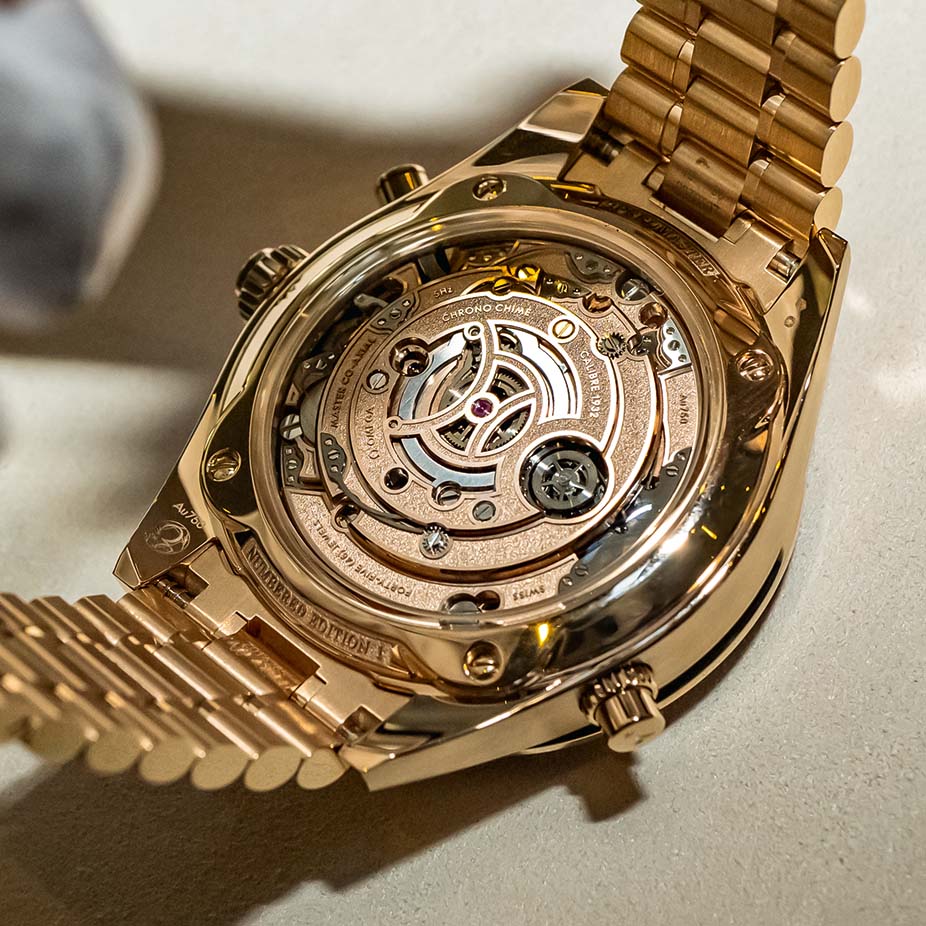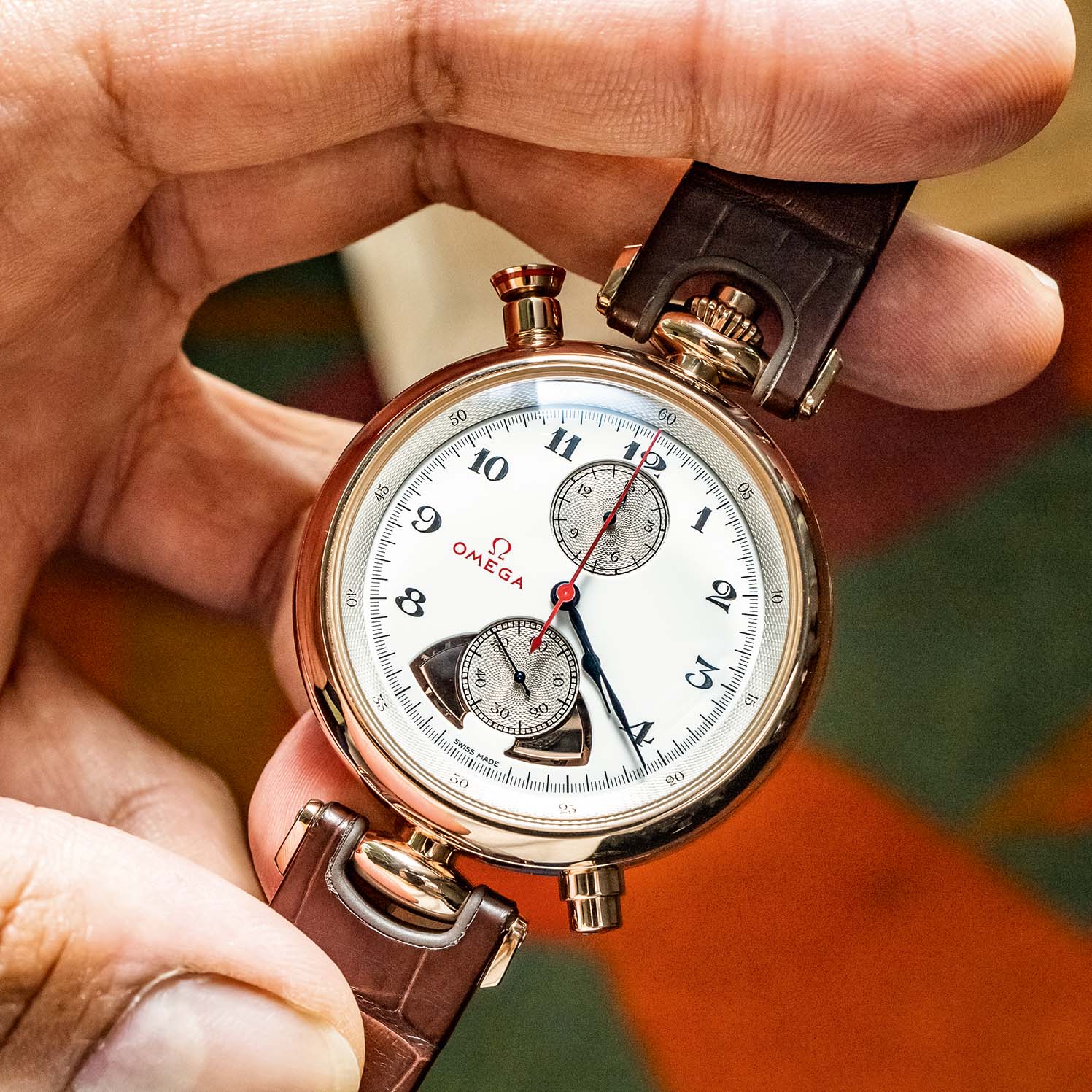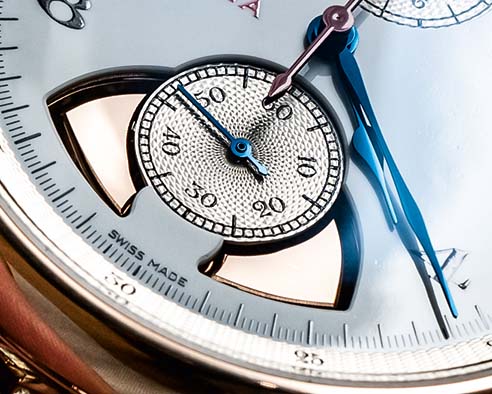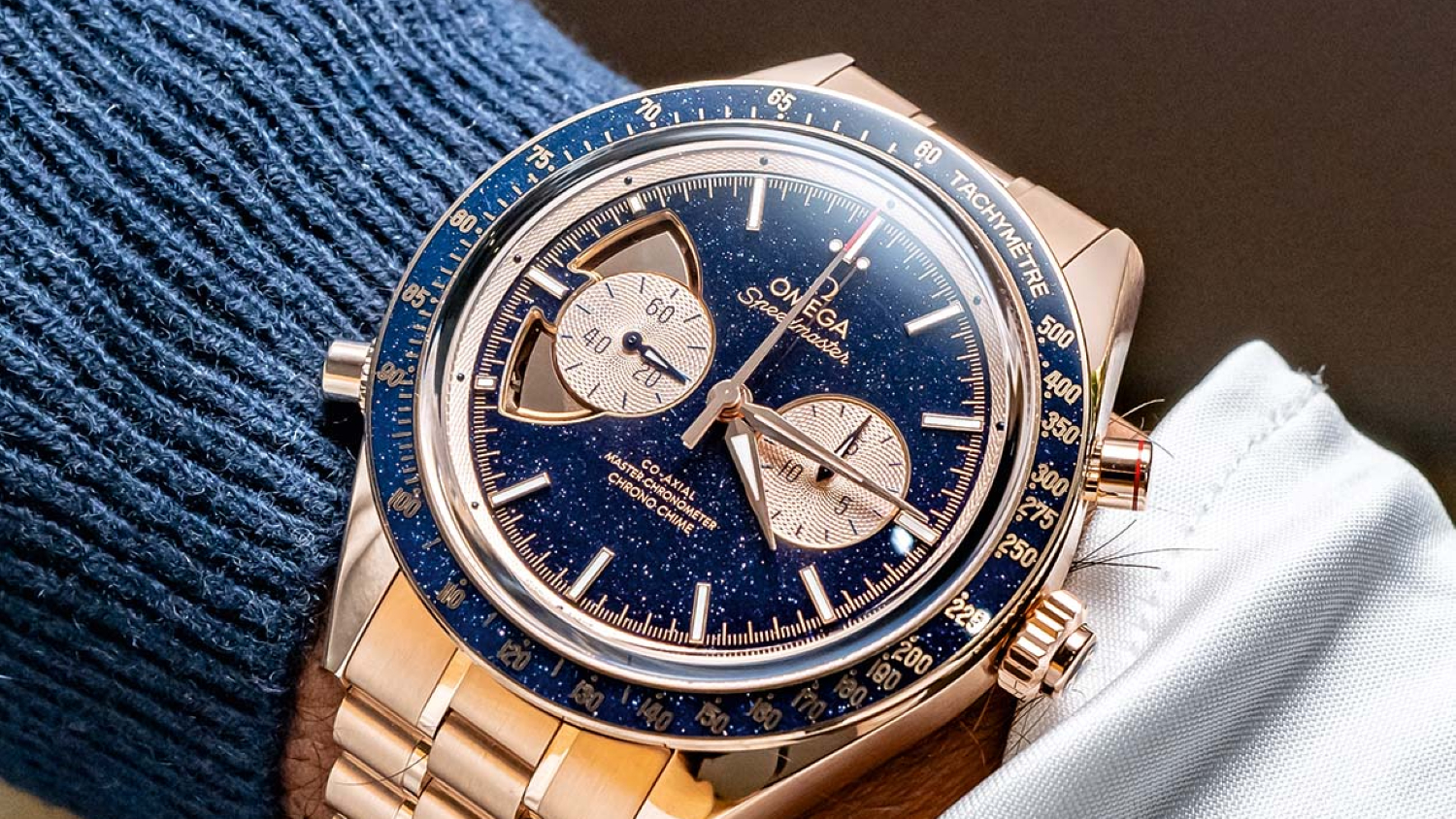Omega released its most complicated movement ever produced at the Walt Disney Concert Hall in Downtown Los Angeles, in 2022. Concert halls aren’t typically top of mind for watch launch venues—even if they are Frank Gehry’s masterful ode to Deconstructivism—but the choice of location was made, strikingly clear when we heard the first chimes of the Omega Co-Axial Master Chronometer Calibre 1932 Chrono Chime. Omega, President and CEO Raynald Aeschlimann unveiled the movement in not one but two very different and distinct watches: A pocket watch-style piece inspired by the 1932 Olympics and a true showstopper of a Speedmaster.
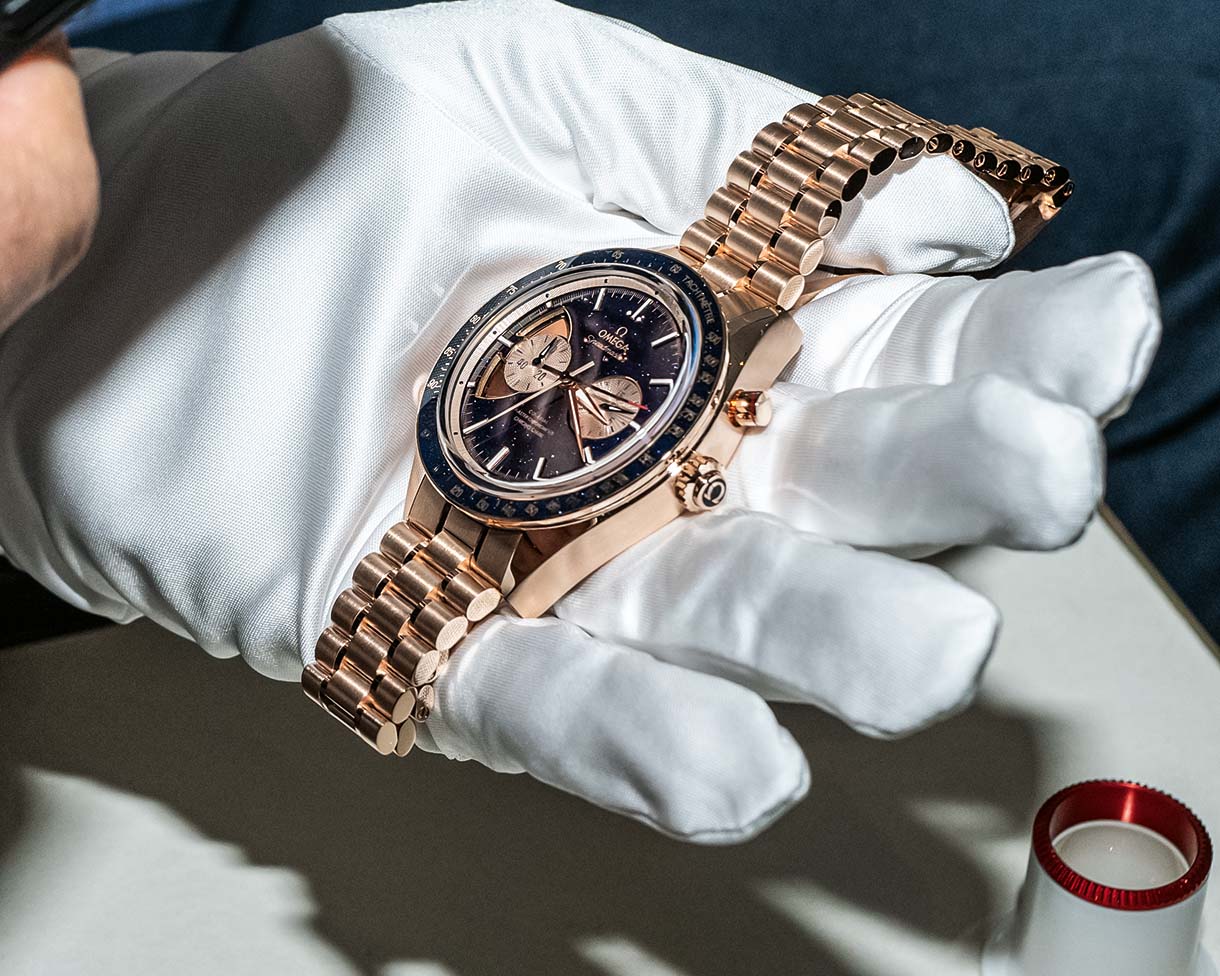 SPEEDMASTER CHRONO CHIME 45 MM, SEDNA™ GOLD ON SEDNA™ GOLD
SPEEDMASTER CHRONO CHIME 45 MM, SEDNA™ GOLD ON SEDNA™ GOLDSo, what is the Chrono Chime? I have read and heard remarks describing the Calibre 1932 as being a minute repeater, which is not accurate, so allow me a moment to clarify for posterity. The Chrono Chime designation doesn’t refer to two independent mechanisms but rather two mechanisms that work in tandem to create something wonderfully unique. Where a traditional minute repeater chimes the time in hours, quarters, and then minutes, Omega merged this function with a rattrapante chronograph to chime the elapsed time up to 15 minutes. Clearly the Olympic games were top of mind when creating and debuting such a niche yet horologically impressive complication. No doubt the Chrono Chime is a substantially more complicated mechanism than a minute repeater, made even more so by being the first of its kind.
So how exactly does this chiming rattrapante work? The low pitch gong indicates minutes, double gong chime indicates 10-second intervals, and the high pitch indicates seconds. So, a lap time of 3:46 would chime as such: three strikes of the low pitch gong, four double gong strikes and six high pitch strikes. Note that there is precisely a 1.5-second break between each phase, which sounds brief but is actually quite intuitive and natural.
In addition to being a world’s first, the Calibre 1932 is also the most complicated movement Omega has ever produced. Done in partnership with Swatch Group sibling Blancpain, it took six years of development to create the Chrono Chime, which comprises 575 components and boasts 17 patents. The process wasn’t simple or easy but the outcome is one the brand is proud of. One initial issue was the 3-4-Hz frequency limitation of Omega’s co-axial escapement, which fell short of the 5 Hz needed to achieve a 1/10th-of-a-second display that is necessary to time any Olympic sport. Another early hurdle was figuring out how to add three cam chimes to an already complex rattrapante chronograph mechanism. And let’s not forget that the Omega Master Chronometer designation demands antimagnetic resistance of 15,000 gauss, which requires using 50 non-ferrous components.
The result of all that problem solving and watchmaking ingenuity is an all-new manual-wind movement with a 60-hour power reserve that is a thing of beauty. Handmade using 46.44 grams of gold, the Calibre 1932 is finished with satin-brushing and mirror polishing throughout.
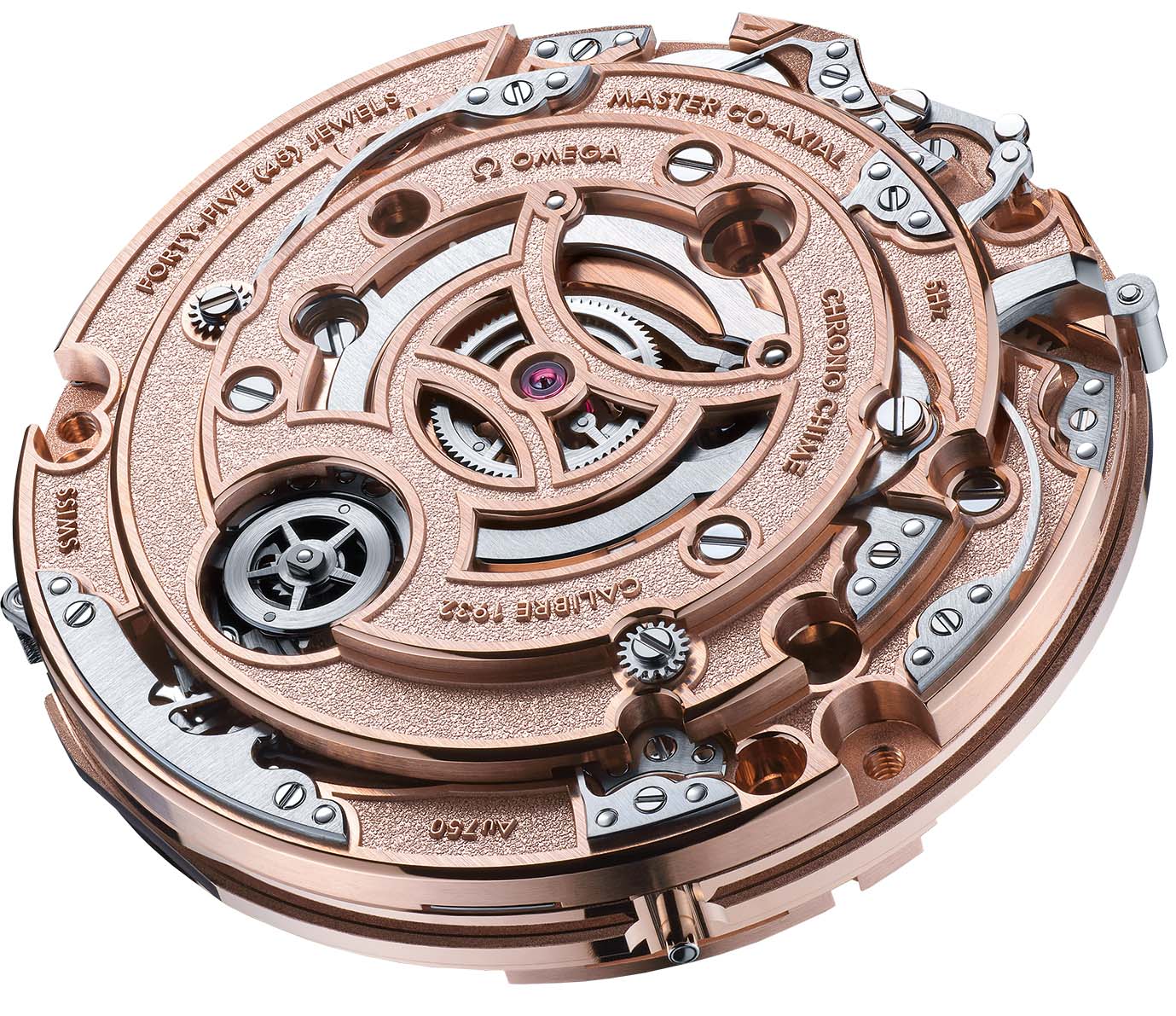 Omega Co-Axial Master Chronometer Calibre 1932 Chrono Chime
Omega Co-Axial Master Chronometer Calibre 1932 Chrono ChimeOmega chose two very different watches in which to house its Chrono Chime movement. The first is the Olympic 1932 Chrono Chime, which has a design inspired by an Omega Minute Repeater from 1892 that is said to be the first worn as a wristwatch. This inspiration is made immediately apparent when looking at those very traditional lugs, crown, and perfectly round case. Done in solid SednaTM gold, the case measures 45mm wide and 16.9mm thick. The 11 o’clock pusher has a red ceramic ring to denote its function as the split-seconds chronograph monopusher, while the 5 o’clock pusher has an embossed music note for its chime activation function.
This model has a beautiful grand feu enamel dial that is framed by an internal bezel in 925 silver with a hand-done guilloché pattern. And it’s not just any old guilloché pattern but one that Omega refers to as “exclusive acoustic waves”, a visual representation of the chime’s sound waves. This pattern is also echoed on the chronograph subdials.
The hour/minute hands, central seconds hand and the subdial hands are done in Sedna gold that is then finished with a blue PVD. The split-seconds chronograph hand is done in a red varnish that stands out for readability. And then there are the 18K Sedna gold gongs. Seen on this model as double hammers flanking the 6 o’clock running seconds subdial, the gongs are fitted with steel inserts and are a joy to see in action. One final detail about the Olympic 1932 is that the leather strap features Omega’s Quick-Change system. The reason for this is that the watch comes with another leather strap as well as two leather cords that allow it to be used as a pocket watch or even a stopwatch worn around the neck.
And then there is the Speedmaster Chrono Chime. At 326 grams done in solid SednaTM gold case and bracelet, this is a Speedy that weighs over 50-percent more than a standard solid gold Moonwatch. Housed in a 45-mm-wide and 17.37-mm-thick case inspired by the CK 2998, the Speedmaster Chrono Chime is clearly designed to dazzle with its absolutely stunning blue aventurine grand feu enamel dial. The bezel is also done in blue aventurine, which left me hoping for a standard production variant with this dial and bezel combo.
Slightly different from the Olympic 1932, the inner bezel and subdials are done in SednaTM gold but have the same special guilloché pattern on them. Omega had to turn the Caliber 1932 around in order to get that classic bicompax layout with subdials at 3 and 9 o’clock. This also moves the split-seconds monopusher to 2 o’clock and the chime activation pusher to 8 o’clock.
Omega is renowned for a bevy of reasons: The Speedmaster Moonwatch, the Seamaster and its 007 tie-in, and the Olympics to name a few. Now, it can add the watchmaking triumph that is the creation of the Chrono Chime complication to its roster. It’s not often we see a watch brand do something unexpected and horologically magnificent but, wow, is it a delight when it does happen. The release of the Omega Calibre 1932 Chrono Chime is a milestone for the brand and I hope at least some of you reading this get the chance to see and hear it in action.
Maximum of five units will be produced annually (that’s including the Olympic 1932 Chrono Chime and Speedmaster Chrono Chime) with a price tag of about half a million dollars each.

